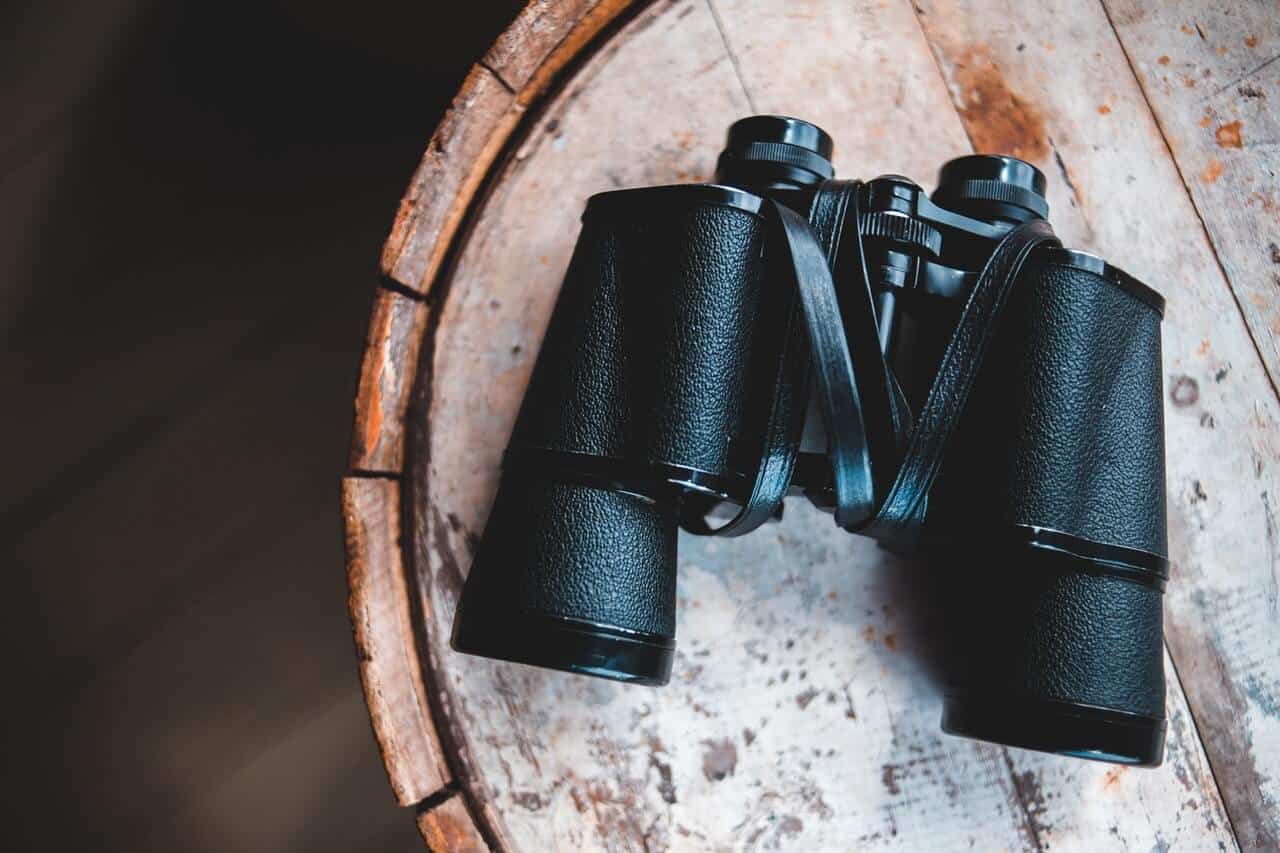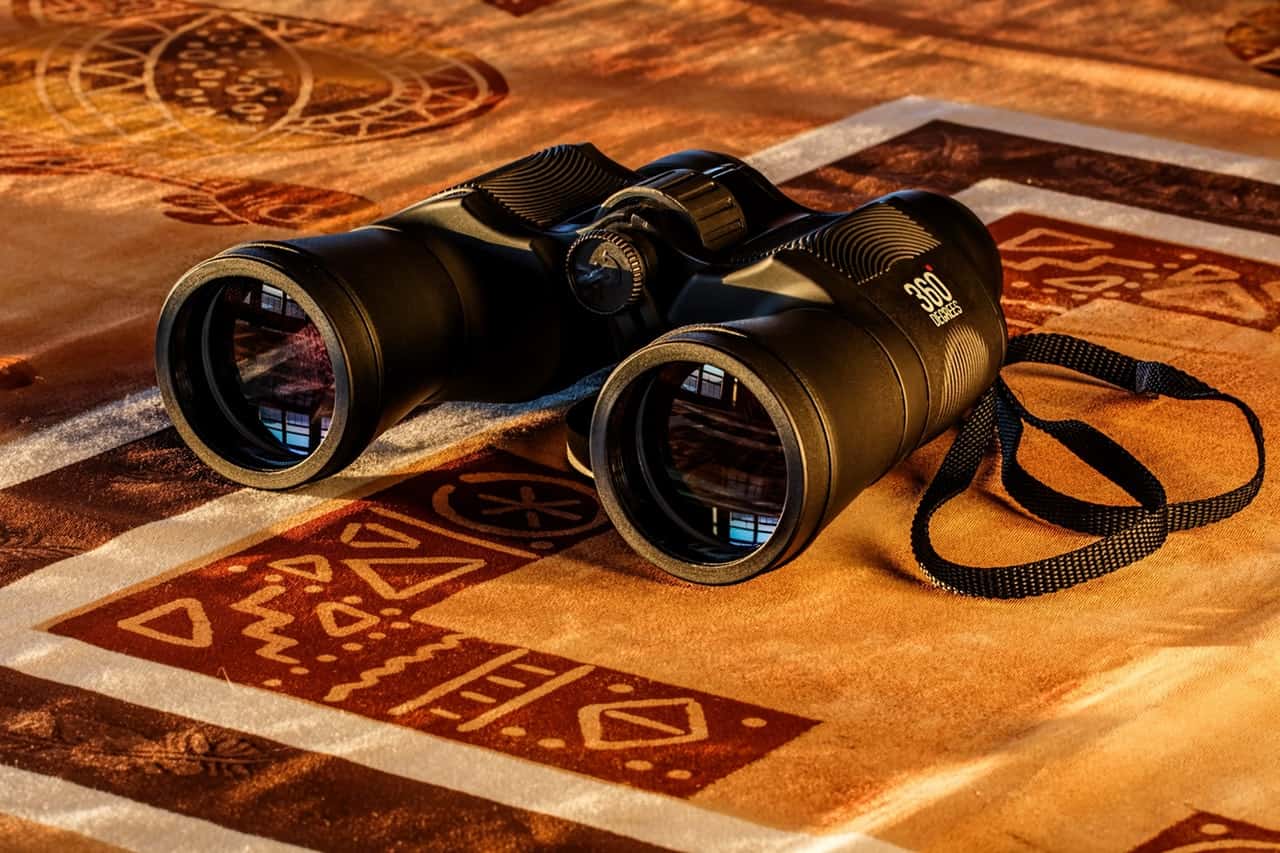Binoculars are a great investment for anyone who enjoys spending time outdoors. However, like any other piece of equipment, they can experience problems from time to time.
There are a few common problems that you may face with Canon binoculars. One is that the lenses may fog up in humid conditions. Another problem is the image quality may degrade in low light conditions. Finally, Canon binoculars may not be suitable for use with eyeglasses.
Today, we will outline some of the most common issues and provide solutions to help you get your binoculars back up and running in no time. So, whether you’re a beginner or an experienced outdoor enthusiast, read on for tips on how to troubleshoot your Canon binoculars. Read on to learn more.
List of common problems with Canon binoculars
Canon is a credible band, but even the best brands can have some problems with their products. Here are some common issues that Canon binocular owners often experience:
- Not being able to see clearly in low light
- Image shaking or bouncing
- Difficulty keeping the binoculars steady
- Glare and reflections
- Eye fatigue
- Blurry images
- Image tremor
- Poor color differentiation in wide FOVs
- Heavy and bulky
- Hard to focus
- Limited eye relief
- Scratching on lenses
Common Problems with Canon Models & Solutions
| Model | Problem | Solution | Check Reviews |
| Canon 8×20 IS | Narrow lenses make focusing tough | Don’t change the lens alignment too often | Check Reviews |
| Canon 8×25 IS | Stabilization feature can cause blurriness | Hold these binoculars with a steady hand or use a tripod | Check Reviews |
| Canon 12×36 IS | Misalignment of the lenses | Re-align the lenses | Check Reviews |
| Canon 10×42 L | Blurriness | Scan with a steady hand | Check Reviews |
| Canon 15×50 IS | Shaky alignment | Regular Collimation | Check Reviews |
| Canon 18×50 IS All-Weather | Heavy and bulky | Use Tripod/Binocular mount | Check Reviews |
| Canon 14×32 IS | The IS feature makes scanning tough | Turn off the IS feature when not needed | Check Reviews |
| Canon 10×30 IS | Poor low-light performance | Increase ambient light | Check Reviews |
Now that you have an idea of the problems you might face with Canon binoculars, let’s discuss them in detail. Knowing how to troubleshoot a problem right away is always better than missing some amazing sights during an adventure. So, here goes:
Canon Binoculars Alignment Problems
If you’re having trouble aligning your Canon binoculars, check if their eyepieces are correctly adjusted for your eyesight. Next, see if the interpupillary distance adjustment is set correctly. If you find a difference in these two adjustments, you’ll have trouble focusing with your binoculars.
But luckily, you can fix Canon binoculars’ alignment problems by realigning the objective lens and eyepiece.
If you check your binoculars’ user manual, you’ll likely find a troubleshooting guide related to alignment problems. But if the alignment problems persist even after following the recommended steps, take your binoculars to a Canon authorized service center for repair.
Canon Binoculars Focusing Problems
Canon binoculars focusing problems are often caused by loose screws and shaky handling. If your Canon binoculars are producing blurry images, there are a few things you can try to clear them up:
First, check if any screws on the binoculars’ chassis are loose. If so, use a screwdriver to tighten them. If that doesn’t solve the problem, you may need to take the binoculars to a professional for further repairs. In the meantime, try cleaning the lenses with a soft, dry microfibre cloth to see if that makes a difference.
Canon Binoculars Collimation Problems
If you want to experience crisp views, your binoculars’ lenses must be perfectly aligned or “collimated.” If they’re even slightly off, it can be difficult to see clearly.
Here are some causes of your Canon binoculars losing their collimation:
- If canon binos are dropped or jarred, it can throw their lenses out of alignment.
- Over time, the lenses can slowly shift out of place.
- Some Canon binoculars have tiny screws that are hard to fine-tune, eventually impacting the overall collimation.
After figuring out that your Canon binos often struggle with collimation, follow these tips to troubleshoot this situation:
- Check your binoculars’ screws and see if they need to be adjusted.
- Try gently tapping or shaking the binoculars to see if that realigns the lenses.
- If all else fails, take your binos to a camera or optical shop to replace their lenses or have an expert collimate them.
Canon Binoculars Double Vision Problems
There are a few potential causes of double vision in Canon binoculars, and thankfully, there are solutions for each one.
- The most common cause of double vision is an issue with the eyepieces. If the eyepieces aren’t correctly aligned, they can cause images to be doubled. The solution here is relatively simple – realign the eyepieces until the double vision disappears.
- Another possibility is that the objectives (lenses at the front of the binoculars) aren’t properly aligned. This can happen if you drop or bump your binoculars, so it’s something to keep an eye on. The fix is similar to the one above – align the binocular lenses until you see the double vision fading away.
Canon Binoculars Chromatic Aberration
There are many chromatic aberration causes in Canon binoculars, but the most common is UFCHA (unfeed corrected hierarchy aberration). This type of chromatic aberration is caused by different colors of light being bent at different angles as they pass through the lenses of the binoculars. This aberration can result from several factors, including incorrect lens spacing, using inaccurate refraction values when making lenses, or using too much or too little glass in the lenses.
There are a few ways to fix this problem:
- The first method is to make sure that the lens spacing is correct. You can do this by removing one of the lens elements and repositioning it until the colors line up correctly.
- Another solution is to use special multi-coated optics that help reduce the amount of scattered light.
- If you don’t want to deal with chromatic aberration every now and then, use achromatic lenses. These lenses are explicitly designed to correct for chromatic aberration.
- Luckily, some Canon binoculars have built-in corrective optics to reduce or eliminate chromatic aberration while focusing. You can consult the brand to find these binos and say goodbye to chromatic aberration once and for all.
Canon Binoculars Coatings Problems
Although issues with Canon binocular coatings are not common, they still exist. Since it’s hard to pinpoint the problem without knowing more about your particular situation, here are a few things to check:
- Make sure you’re cleaning the lenses properly. Clearing fingerprints and other smudges is essential, but you also need to be careful not to damage the delicate coatings. Use a soft, microfiber cloth and avoid using harsh chemicals or abrasives.
- Check for scratches or other damages to the lens surface. If the coating is damaged, it will be less effective at protecting the underlying glass from dirt, water, and other external elements.
- Lastly, take care of your Canon binocular lenses when not in use by keeping them away from moisture and scratches.
Canon Binoculars Eyecup Issues And Replacement
If you’re having issues with your Canon binoculars’ eyecups, there are a few things you can try before replacement becomes necessary. Check if the cups are clean and free of any debris. If they’re dirty, cleaning them with a soft, dry cloth should take care of the problem.
However, if the cups are damaged or worn out, replacing them may be the only option. Fortunately, Canon offers replacement cups for many of its binocular models. You can find the right part number for your model on the Canon website and order replacement parts from an authorized Canon dealer.
Sticky Canon Binoculars
There can be a few reasons why your Canon binoculars are having trouble with stickiness. One possibility is that the lubricant on the moving parts, i.e., lenses, has dried up, causing them to become sticky.
Another reason could be that some dirt or sand has gotten into the eye barrels and is causing them to seize up. If you’re experiencing stickiness with your binoculars, it’s best to take them in for servicing so that a technician can take a look at them and determine the root of the problem.
Depending on what’s causing the issue, there may be a simple solution like reapplying lubricant or cleaning out some dirt and sand.
Canon Binoculars Diopter Adjustment
Canon binoculars’ diopter adjustment can be tricky if you’re a new user, thanks to their sturdy screws. Turning the diopter adjustment wheel clockwise will make the binoculars focus closer, and turning it counter-clockwise will make them focus further away.
Some people need to adjust the diopter on their Canon binoculars depending on whether they wear contacts or glasses. If you are wearing contacts, you may need to turn the diopter adjustment wheel in the opposite direction (counter-clockwise) to achieve proper focus, and clockwise if you wear specs/sunglasses.
Canon Binoculars Eye Relief
The eye relief on a binocular is the distance between your eye and the eyepiece lenses. It’s important because it determines how much field of view (FOV) you’ll have and how easily you can use the binoculars with your glasses on. The general rule of thumb is that you want an eye relief of at least 10mm for daytime use and 14mm for nighttime use.
There are two ways to increase the eye relief on your binoculars: Buy a model with long eyepieces or add spacing adapters to the eyepieces. Longer eyepieces cost more, but they’re usually worth it if you wear glasses and want to prevent eye strain.
Canon Binoculars Lens Fogging Issue
Lens fogging is a common issue with binoculars, and you can usually fix it with these simple steps:
- Make sure that the eyepieces are clean and free of any dirt or dust. You can clean them using a soft cloth or lens brush. If there is still some dirt or dust on the lenses, clean them with a small amount of alcohol or glass cleaner.
- See if the eyepiece caps are secure and in place. If not, replace them and make sure they’re tightly fitted.
- Try adjusting the focus until the image becomes clear and there’s no fogging.
These quick steps are likely to overcome fogging and improve your binoculars’ focusing ability.
Canon Binocular Replacement Parts
Binoculars are an essential piece of equipment for birders, hunters, and nature enthusiasts alike. But like any other piece of gear, they require regular maintenance and occasional repairs. Here are some Canon binoculars replacement parts to improve your user experience:
- Eyepieces
- Prisms
- Lens Covers
- Objective Lenses
- Ocular Lenses
- Barrels
- Tripods & Mounts
- Focus Wheels
- Cleaning Supplies and Kits
- Binocular straps
Since finding the exact replacement parts for Canon binoculars is tricky, do proper research before splurging. Note your binoculars’ specs, i.e., lens size, before ordering replacement parts.
Canon Binoculars Repair (Cost & Contact Details)
If you’re in need of a Canon binoculars repair, you’ll be glad to know that the process is straightforward. The repairs will be covered under your warranty in most cases, so there’s no need to worry about expensive out-of-pocket costs.
To start the repair process, simply contact Canon’s customer service department at 800-828-4040 and explain the problem you’re experiencing with your binoculars. They’ll then provide you with instructions on how to send in your binoculars for repair. Once received, a technician will assess the damage and determine the best course of action. In most cases, they’ll be able to make the necessary repairs and have your binoculars back to you within a few weeks. As far as the repair cost is concerned, depending on the issue, it can cost somewhere from $150 and upwards.
Of course, if your binoculars are beyond repair or not covered under warranty, you’ll be responsible for the repair costs. However, Canon does offer a wide range of affordable repair options that should suit most budgets.
Also Read:
- Swarovski Binoculars Foggy Lenses Issues (Explained)
- Sticky Zeiss Binoculars Problems (With Solution)
- Nikon Binoculars Diopter Adjustment (SOLVED)
- Bushnell Binoculars Coatings & Other Problems (FIXED)
- Vortex Binoculars Lens Fogging Issue (Explained)
- Fujinon Binoculars Alignment Problems (Answered)
- Leupold Binoculars Not Focusing Issues (Reasons)
- Hawke Binoculars Not Focusing Issues (SOLVED)
Summing Up
There you have it. Sure, everyone’s experience with Canon binoculars is different, but these are some problems almost all Canon users face.
If you find yourself struggling with blurry views or double vision, don’t panic just yet. Most of the time, you can fix these solutions with a bit of effort and diligence. But if your Canon binoculars don’t seem fixable, contact Canon’s customer service department and let them further guide you.
We hope these tips help you use your Canon binos more confidently. Good luck!

Binos enthusiast since I was 12 – A real expert in all things optics including rifle scopes and red dots. Live in Dubai & love writing, beaches and eating!






